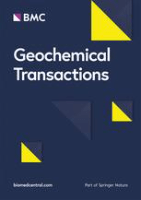
GEOCHEMICAL TRANSACTIONS
Scope & Guideline
Innovative Insights into Earth’s Chemical Processes
Introduction
Aims and Scopes
- Environmental Geochemistry:
Research on the chemical composition and quality of water bodies, including assessments of pollution levels, health risks, and the effects of human activities on aquatic systems. - Mineral Geochemistry:
Studies focusing on the geochemical properties of minerals, including crystal growth, mineral transformations, and the geochemical behavior of elements within different geological contexts. - Hydrogeochemistry:
Investigation of the chemical characteristics of groundwater and surface water, including the interactions between water and geological materials, and implications for water resource management. - Geochemical Modeling and Theoretical Studies:
Development and application of theoretical models to understand geochemical processes, including adsorption mechanisms, mineral stability, and isotope fractionation. - Geochemical Risk Assessment:
Assessment of the environmental and health risks associated with heavy metal contamination and other toxic elements in various ecosystems, particularly in relation to human health.
Trending and Emerging
- Impact of Climate Change on Water Quality:
Recent studies have increasingly focused on how climate change and anthropogenic activities affect water quality, particularly in river systems, highlighting the importance of understanding water rejuvenation processes. - Heavy Metal Contamination and Public Health:
There is a rising emphasis on assessing the health risks associated with heavy metal contamination in aquatic ecosystems, reflecting a growing concern for public health implications and environmental safety. - Geochemical Interactions in Carbon Storage:
Research on basalt-water-CO2 interactions for carbon storage solutions is emerging as a significant area, driven by the global need for effective carbon sequestration strategies. - Remote Sensing Applications in Geochemistry:
The use of remote sensing technologies to study hydrothermal processes and mineral alterations indicates a trend towards integrating advanced technologies in geochemical research. - Microbial Influence on Mineral Processes:
An increasing number of studies are exploring the role of microbial activity in mineral transformations and biogeochemical cycles, highlighting the intersection of microbiology and geochemistry.
Declining or Waning
- Agricultural Geochemistry:
Research related to the geochemistry of soils and their impact on agricultural practices has become less frequent, indicating a potential shift away from agricultural applications towards more environmental and mineralogical studies. - Sedimentary Geochemistry:
Studies focusing on the geochemical analysis of sedimentary formations and their historical implications are appearing less often, suggesting a waning interest in this specific area within the broader geochemical research. - Geochemical Techniques and Instrumentation Innovations:
While important, the focus on new geochemical techniques and instrumentation appears to be less prevalent, possibly due to a saturation of existing methodologies and a shift towards applied geochemistry and case studies.
Similar Journals

LITHOLOGY AND MINERAL RESOURCES
Cultivating Awareness of Lithological Impacts on ResourcesLITHOLOGY AND MINERAL RESOURCES, published by PLEIADES PUBLISHING INC, is a specialized journal dedicated to advancing knowledge in the fields of economic geology, geochemistry, and petrology. With its ISSN 0024-4902 and E-ISSN 1608-3229, this journal has established itself as a critical resource for scholars and practitioners alike, examining the intricate relationships between lithology and mineral deposits, and their implications for resource management. As indicated by its positioning in the Q3 quartile for both economic geology and geochemistry and petrology in 2023, the journal is recognized for its valuable contributions to the scientific community, ranking #28 out of 43 in Economic Geology and #112 out of 154 in Geochemistry and Petrology according to Scopus. The journal's publication history reveals a rich tradition of excellence, as it has been continuously contributing to the field from 1984 to 2024. While it does not offer open access options, researchers and practitioners can easily engage with its robust body of work in effective ways to support their own studies and applications. The importance of LITHOLOGY AND MINERAL RESOURCES lies in its commitment to publishing high-quality research that informs practices in mineral exploration and environmental stewardship, making it an essential resource for anyone invested in the future of earth sciences.
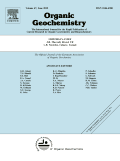
ORGANIC GEOCHEMISTRY
Innovating Understanding in Organic GeochemistryORGANIC GEOCHEMISTRY, published by PERGAMON-ELSEVIER SCIENCE LTD, is a pivotal journal in the field of geochemistry and petrology, dedicated to the exploration of organic compounds and their interactions within geological systems. Established in 1977, this journal has been an influential medium for researchers, providing significant insights and advancements that have shaped the understanding of organic geochemistry. With an impressive impact factor and a distinguished ranking of Q2 in its category, it sits at the forefront of academic research, currently holding the 46th position out of 154 in Earth and Planetary Sciences according to Scopus, which places it within the top 70th percentile. Although it operates on a subscription basis, ORGANIC GEOCHEMISTRY is recognized for its rigorous peer-review process, ensuring that only the highest quality research is published. Its scope includes an array of critical topics, appealing to geochemists, petrologists, students, and professionals looking to deepen their knowledge and contribute to this dynamic field. With converged publications extending into 2024, the journal continues to play a crucial role in the dissemination of cutting-edge research that addresses global challenges such as environmental change and resource management.

PETROLOGY
Exploring the Intricacies of Mineral CompositionsPETROLOGY is a significant journal in the field of Geochemistry and Petrology, published by PLEIADES PUBLISHING INC in the United States. With an ISSN of 0869-5911 and an E-ISSN of 1556-2085, this journal has established itself as a valuable resource since its inception in 1996, continuing to provide insights into various aspects of petrology and geochemical processes through to 2024. It holds a Q3 ranking in the 2023 category quartiles for Geochemistry and Petrology, placing it within the academically relevant tier of journals as recognized by Scopus. Although it does not currently offer open access, the journal remains accessible to researchers, professionals, and students eager to explore the intricate relationships between mineral compositions and geological phenomena. By publishing high-quality research and reviews, PETROLOGY plays a crucial role in advancing knowledge, contesting existing paradigms, and fostering discussions on both fundamental and applied topics within the petrology domain.

GEOCHEMICAL JOURNAL
Pioneering Discoveries in Geochemistry and GeophysicsGEOCHEMICAL JOURNAL, published by the Geochemical Society of Japan, stands as a pivotal platform for researchers and professionals dedicated to the fields of geochemistry and petrology, as well as geophysics. With the ISSN 0016-7002 and E-ISSN 1880-5973, this journal has been disseminating cutting-edge research since its inception in 1966 and continues to provide invaluable insights into the complexities of Earth's processes. Currently categorized in the Q3 quartile for both Geochemistry and Petrology and Geophysics, the journal ranks in the 40th and 36th percentiles, respectively, as per Scopus metrics, reflecting its growing influence and relevance in the scientific community. The journal accepts a range of scholarly articles, aiming to foster a deeper understanding of geochemical phenomena while promoting interdisciplinary collaboration among academicians and practitioners. Although not open access, the GEOCHEMICAL JOURNAL's commitment to quality research and education underscores its vital role in advancing the discourse within geoscience.

GEOCHEMISTRY INTERNATIONAL
Pioneering Research in Petrology and GeophysicsGEOCHEMISTRY INTERNATIONAL, an esteemed journal published by MAIK NAUKA/INTERPERIODICA/SPRINGER, serves as a vital platform for researchers in the fields of geochemistry, petrology, and geophysics. With a deep history reaching back to its inception, the journal spans significant converged years from 1977 to 1978 and continues its publication through 2024. Although it currently does not offer Open Access options, its scholarly impact is underscored by an established reputation indicated by its Q3 categorization in both Geochemistry and Petrology and Geophysics for 2023. Researchers can leverage this platform to disseminate groundbreaking findings and engage with contemporary discussions in Earth and planetary sciences, where it ranks at the 39th and 32nd percentiles within its respective categories. The journal is an essential resource for professionals, students, and scholars seeking to deepen their understanding of geochemical processes and evolve scientific discourse within this dynamic field.
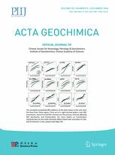
Acta Geochimica
Exploring the Earth's Secrets, One Element at a Time.Acta Geochimica is a prominent academic journal published by SPRINGER INT PUBL AG, focusing on the dynamic fields of Geochemistry and Petrology. Established in 2016, this peer-reviewed publication has quickly gained recognition within the scientific community, currently holding a category quartile ranking of Q3 in Geochemistry and Petrology as of 2023. With its ISSN 2096-0956 and E-ISSN 2365-7499, the journal offers a platform for researchers and professionals to disseminate and discuss significant advancements in the study of the chemical composition of the Earth and other celestial bodies. While it is not an open-access journal, Acta Geochimica plays a vital role in fostering collaboration and innovation among scientists, contributing to a deeper understanding of geochemical processes. Located in Switzerland at Gewerbestrasse 11, Cham CH-6330, Switzerland, this journal is a critical resource for students, researchers, and professionals seeking to push the boundaries of knowledge in Earth sciences.
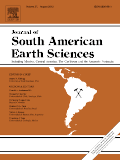
JOURNAL OF SOUTH AMERICAN EARTH SCIENCES
Pioneering Research in South American Earth SciencesJOURNAL OF SOUTH AMERICAN EARTH SCIENCES is a premier interdisciplinary journal dedicated to publishing high-quality research in the fields of Earth-Surface Processes, Geology, and Paleontology, making it an essential resource for scientists and researchers focused on South American geology and its diverse geological phenomena. Published by Pergamon-Elsevier Science Ltd in the United Kingdom, this journal has been instrumental in disseminating groundbreaking studies since 1988, showcasing contributions that push the boundaries of knowledge in Earth and Planetary Sciences. With an impressive Scopus ranking—positioning it in the 74th percentile for Paleontology and 71st for Geology—this journal not only reflects robust academic quality but also its commitment to addressing critical geological challenges in South America. Researchers will appreciate its objective of advancing understanding of geological processes while providing insights into past, present, and future Earth environments. Although available through traditional subscription models, the journal's vast repository of articles enriches the academic landscape, facilitating the sharing of vital research among professionals, students, and geological practitioners.
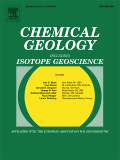
CHEMICAL GEOLOGY
Pioneering Discoveries in Geochemistry and PetrologyChemical Geology is an esteemed international journal published by Elsevier, dedicated to the rigorous exploration of geochemistry and petrology, with its foundational roots tracing back to 1966. As evidenced by its impressive Q1 ranking in both Geochemistry and Petrology as well as Geology in the 2023 category quartiles, this journal stands as a premier outlet for cutting-edge research and innovative methodologies within these vital fields. With a Scopus rank placing it in the top 10% of Earth and Planetary Sciences, Chemical Geology offers a platform for researchers, professionals, and students alike to disseminate findings that advance our understanding of geological processes and materials. Although it does not currently offer open-access options, the journal remains committed to high-quality publications that contribute significantly to the scholarly community. Located in the vibrant academic milieu of Amsterdam, Netherlands, Chemical Geology is an essential resource for those engaged in the earth sciences, aiming to bridge theoretical insights with practical applications.
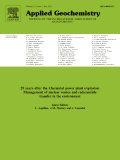
APPLIED GEOCHEMISTRY
Exploring the Nexus of Geochemistry and Environmental ScienceApplied Geochemistry is an esteemed peer-reviewed journal published by Pergamon-Elsevier Science Ltd, dedicated to advancing the field of geochemistry by exploring the intricate relationships between geological processes and environmental chemistry. With a significant impact factor and prestigious standing in various categories, including Environmental Chemistry, Geochemistry and Petrology, and Pollution, Applied Geochemistry is classified within the Q2 quartile, reflecting its influence and recognition in the scientific community. The journal spans research contributions from 1986 to the present, focusing on critical issues such as the impact of geochemical processes on the environment, the evaluation of pollution sources, and innovative methodologies in geochemical analysis. Through its rigorous publication standards, Applied Geochemistry serves as a vital resource for researchers, professionals, and students seeking to enrich their understanding of geochemical phenomena and their implications for environmental health. Please note that access to the journal is not open; therefore, institutional or individual subscriptions may be required for full-text viewing.
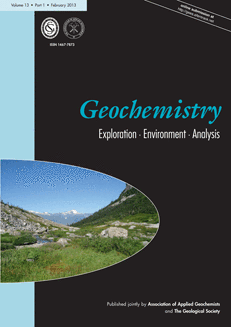
GEOCHEMISTRY-EXPLORATION ENVIRONMENT ANALYSIS
Transforming environmental analysis through interdisciplinary research.GEOCHEMISTRY-EXPLORATION ENVIRONMENT ANALYSIS, published by the esteemed Geological Society Publishing House, is a leading journal in the fields of geochemistry, environmental science, and Earth and planetary sciences. With an ISSN of 1467-7873 and E-ISSN of 2041-4943, this journal has established itself as a valuable resource for scholars and professionals since its inception in 2001. The journal currently holds a Q3 quartile ranking in several categories, highlighting its relevance and impact within interdisciplinary research landscapes. Covering a broad scope of topics ranging from geochemical explorations to environmental assessments, GEOCHEMISTRY-EXPLORATION ENVIRONMENT ANALYSIS serves as a platform for innovative research and critical analysis, contributing significantly to advancing knowledge in the context of ongoing global environmental challenges. Researchers looking for a credible outlet to disseminate their findings will find this journal particularly appealing, as it encourages submissions that explore novel methodologies and interdisciplinary approaches. Although the journal follows a subscription-based access model, it provides valuable insights that can enhance academic discourse and foster collaboration among experts in the field.